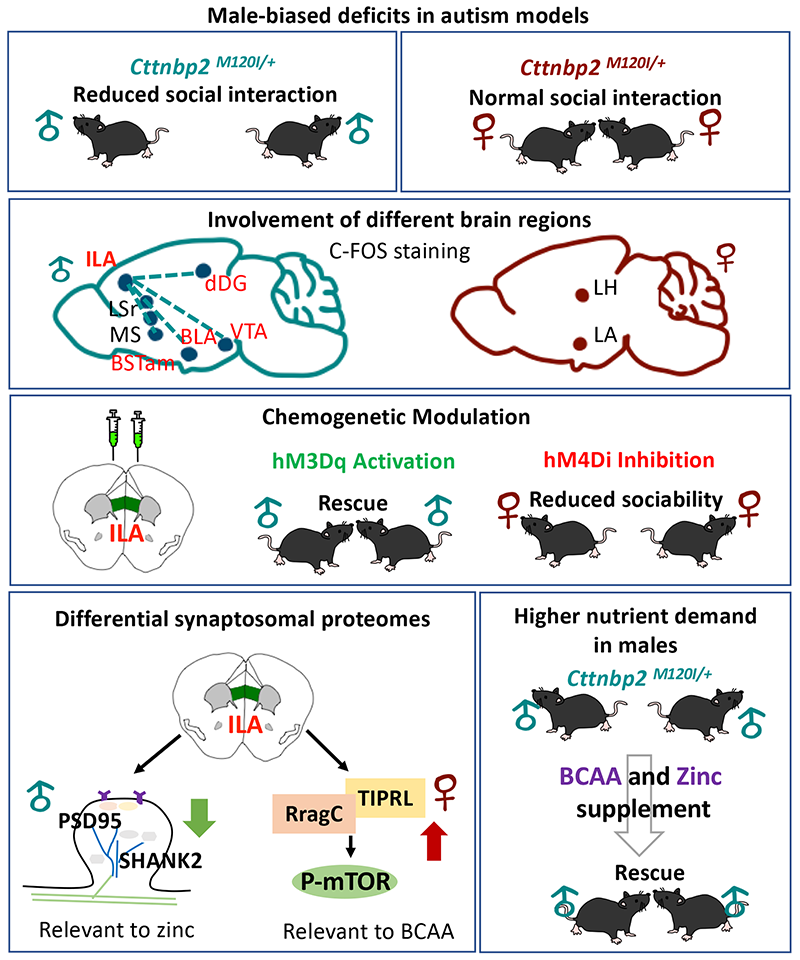Sex bias in social deficits, neural circuits and nutrient demand in Cttnbp2 autism models
Dr. Hsueh, Yi-Ping - November, 2022
Autism spectrum disorders caused by both genetic and environmental factors are strongly male-biased neuropsychiatric conditions. However, the mechanism underlying the sex bias of autism spectrum disorders remains elusive. Here, we use a mouse model in which the autism-linked gene Cttnbp2 is mutated to explore the potential mechanism underlying the autism sex bias. Autism-like features of Cttnbp2 mutant mice were assessed via behavioral assays. C-FOS staining identified sex-biased brain regions critical to social interaction, with their roles and connectivity then validated by chemogenetic manipulation. Proteomic and bioinformatic analyses established sex-biased molecular deficits at synapses, prompting our hypothesis that male-biased nutrient demand magnifies Cttnbp2 deficiency. Accordingly, intakes of branched-chain amino acids (BCAA) and zinc were experimentally altered to assess their effect on autism-like behaviors. Both deletion and autism-linked mutation of Cttnbp2 result in male-biased social deficits. Seven brain regions, including the infralimbic area of the medial prefrontal cortex (ILA), exhibit reduced neural activity in male mutant mice but not in females upon social stimulation. ILA activation by chemogenetic manipulation is sufficient to activate four of those brain regions susceptible to Cttnbp2 deficiency and consequently to ameliorate social deficits in male mice, implying an ILA-regulated neural circuit is critical to male-biased social deficits. Proteomics analysis reveals male-specific downregulated proteins (including SHANK2 and PSD-95, two synaptic zinc-binding proteins) and female-specific upregulated proteins (including RRAGC) linked to neuropsychiatric disorders, which are likely relevant to male-biased deficits and a female protective effect observed in Cttnbp2 mutant mice. Notably, RRAGC is an upstream regulator of mTOR that senses branched-chain amino acids (BCAA), suggesting that mTOR exerts a beneficial effect on females. Indeed, increased BCAA intake activates the mTOR pathway and rescues neuronal responses and social behaviors of male Cttnbp2 mutant mice. Moreover, mutant males exhibit greatly increased zinc demand to display normal social behaviors.
Mice carrying an autism-linked Cttnbp2 mutation exhibit male-biased social deficits linked to specific brain regions, differential synaptic proteomes and higher demand for BCAA and zinc. We postulate that lower demand for zinc and BCAA are relevant to the female protective effect. Our study reveals a mechanism underlying sex-biased social defects and also suggests a potential therapeutic approach for autism spectrum disorders.
